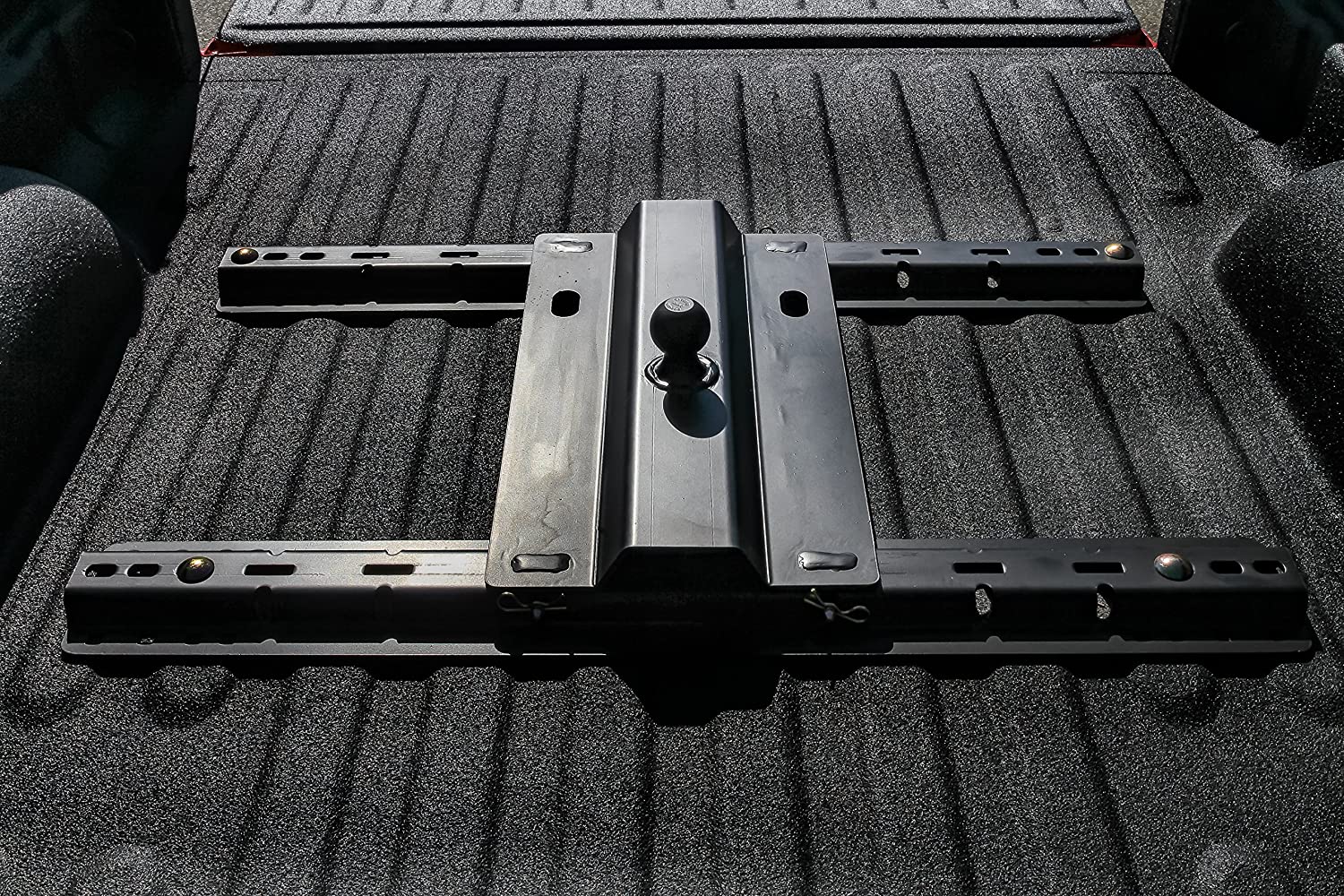

gooseneck hitch
A gooseneck hitch can be a highly useful and efficient tool to have on your truck but installing it can be a bit of a hassle for most people.
The process of placing a gooseneck hitch on your truck involves removing the spare tire first, then taking appropriate measurements and drilling an appropriately sized hole for the ball. Then all you need to is bolt the bracket safely, put the hitch in place, and install the operating handle. Some of them may also require you to trim a heat shield or a fender liner.
But this brief overview of the process may be confusing to some, especially if you've never installed such a piece of equipment before.
That's why in this article, we're putting down the step-by-step process of gooseneck hitch installation, which is perfect for both beginners and experienced individuals. By following this easy guide, you can also save up on the gooseneck hitch installation cost.
1. Removing The Tire
The first step of the process of installing a gooseneck hitch involves removing the spare tire so that you can gain access to the underside of your truck. By removing the spare tire, you'll gain more room to work as well. Depending on the kind of model you have, you may need to remove a section or part of the end of the truck to make space for the hitch, and this may include the wheel well liner and the heat shield. Follow specific instructions to know how to remove or trim the exact part.
2. Measure and Drill The Ball Hole
Once you have removed the tire and any required part, it is time for you to measure where the gooseneck ball will be cut on the floor of the truck. The location of the hole should be located either above or toward the rear axle of the truck, and in the center of the wheel wells. When doing so, firstly, make sure that you check all the measurements thoroughly and according to the measurements laid down by the manual. Once that is done, drill the hole that you have measured carefully, with an appropriate drill size. Finally, cover up any exposed edges with paint to clean up the area and prevent rusting.
3. Insert Cross-Arm Brackets
Then, you have to insert the cross-arm brackets carefully. Do so from the access point of the rear wheel area. Once you have the gear in position, using a wrench rotate the cross-arm till it reaches the correct position. Depending upon the bolt, the bolt holes will either be parallel or perpendicular.
4. Place Gooseneck Center
Now comes an important part. Take the gooseneck center section and make sure that you have it prepped and ready for the installation. Then, get under the truck bed and place it on the hole. You may need some help here as some models tend to be very heavy and will require the assistance of more people. Once the equipment is in place, attach it there with the cross-arm brackets, carefully.
5. Install Side-Plate Brackets
With your gooseneck center section in place, you also have to attach the side-plate brackets in place. These will have to be bolted in place on the sides of the wheel wells. When you're installing this part, make sure that there is the proper alignment of the gooseneck hitch with the truck frame. Install the side-plate brackets on both the drivers as well as the passenger side.
6. Attach Safety-Chain Anchors
Once the side-plate brackets are in place, it is time for you to install the safety-chain anchors. However, before doing so make sure that you torque all the hardware and take care to ensure that everything is tight and in its place. To attach the safety anchors, you'll have to drill holes into the truck bed once more. Once you've created the holes, paint them to prevent rusting and corrosion, and drop them in the safety chains and install the hardware as required. If you're unsure about the placement, try using the gooseneck center as a reference.
7. Attach Operating Handle
Finally, you'll have to install the operating handle. Place the locking pin mechanism into the edge or the side of the ball hole. Then, slide the operating handle through the wheel well and carefully pass it through the hitch center section, and into the locking pin. Then, attach the required fasteners if any, and test to see if the ball is working properly or not.
